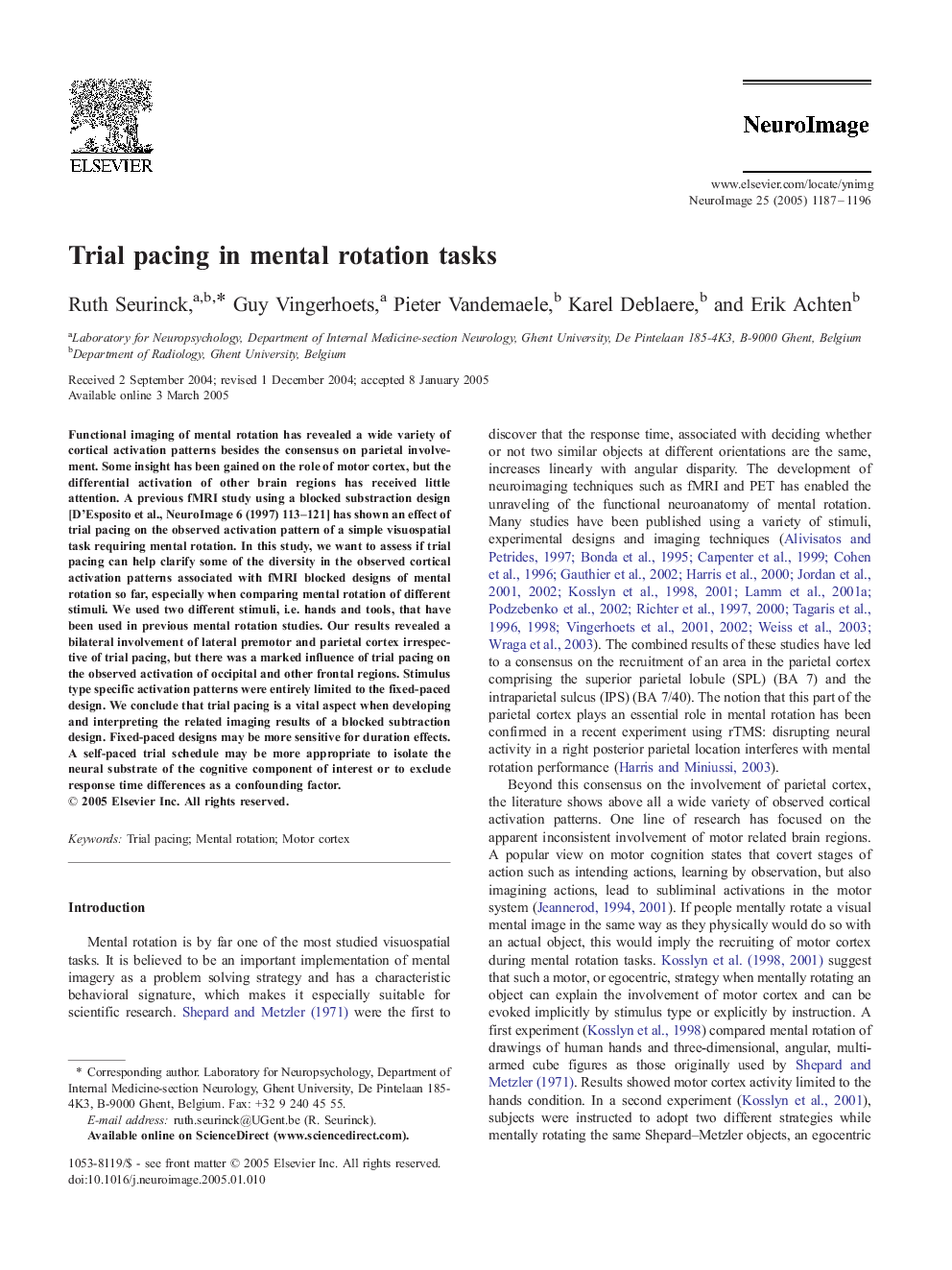| Article ID | Journal | Published Year | Pages | File Type |
|---|---|---|---|---|
| 9198047 | NeuroImage | 2005 | 10 Pages |
Abstract
Functional imaging of mental rotation has revealed a wide variety of cortical activation patterns besides the consensus on parietal involvement. Some insight has been gained on the role of motor cortex, but the differential activation of other brain regions has received little attention. A previous fMRI study using a blocked substraction design [D'Esposito et al., NeuroImage 6 (1997) 113-121] has shown an effect of trial pacing on the observed activation pattern of a simple visuospatial task requiring mental rotation. In this study, we want to assess if trial pacing can help clarify some of the diversity in the observed cortical activation patterns associated with fMRI blocked designs of mental rotation so far, especially when comparing mental rotation of different stimuli. We used two different stimuli, i.e. hands and tools, that have been used in previous mental rotation studies. Our results revealed a bilateral involvement of lateral premotor and parietal cortex irrespective of trial pacing, but there was a marked influence of trial pacing on the observed activation of occipital and other frontal regions. Stimulus type specific activation patterns were entirely limited to the fixed-paced design. We conclude that trial pacing is a vital aspect when developing and interpreting the related imaging results of a blocked subtraction design. Fixed-paced designs may be more sensitive for duration effects. A self-paced trial schedule may be more appropriate to isolate the neural substrate of the cognitive component of interest or to exclude response time differences as a confounding factor.
Keywords
Related Topics
Life Sciences
Neuroscience
Cognitive Neuroscience
Authors
Ruth Seurinck, Guy Vingerhoets, Pieter Vandemaele, Karel Deblaere, Erik Achten,
